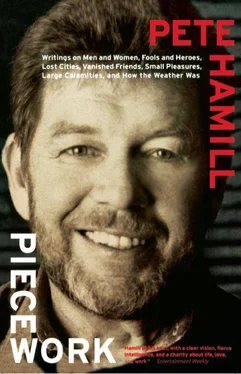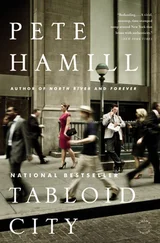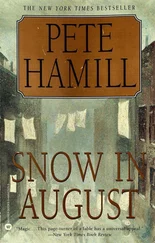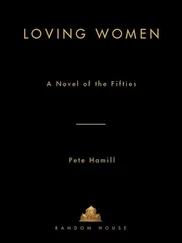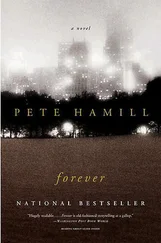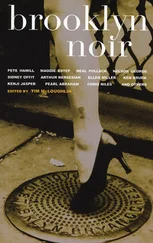Pete Hamill - Piecework
Здесь есть возможность читать онлайн «Pete Hamill - Piecework» весь текст электронной книги совершенно бесплатно (целиком полную версию без сокращений). В некоторых случаях можно слушать аудио, скачать через торрент в формате fb2 и присутствует краткое содержание. Год выпуска: 2009, ISBN: 2009, Издательство: Little, Brown and Company, Жанр: Современная проза, Публицистика, на английском языке. Описание произведения, (предисловие) а так же отзывы посетителей доступны на портале библиотеки ЛибКат.
- Название:Piecework
- Автор:
- Издательство:Little, Brown and Company
- Жанр:
- Год:2009
- ISBN:9780316082952
- Рейтинг книги:5 / 5. Голосов: 1
-
Избранное:Добавить в избранное
- Отзывы:
-
Ваша оценка:
- 100
- 1
- 2
- 3
- 4
- 5
Piecework: краткое содержание, описание и аннотация
Предлагаем к чтению аннотацию, описание, краткое содержание или предисловие (зависит от того, что написал сам автор книги «Piecework»). Если вы не нашли необходимую информацию о книге — напишите в комментариях, мы постараемся отыскать её.
offers sharp commentary on diverse subjects, such as American immigration policy toward Mexico, Mike Tyson, television, crack, Northern Ireland and Octavio Paz.
Piecework — читать онлайн бесплатно полную книгу (весь текст) целиком
Ниже представлен текст книги, разбитый по страницам. Система сохранения места последней прочитанной страницы, позволяет с удобством читать онлайн бесплатно книгу «Piecework», без необходимости каждый раз заново искать на чём Вы остановились. Поставьте закладку, и сможете в любой момент перейти на страницу, на которой закончили чтение.
Интервал:
Закладка:
From the audience, the questions are no airy abstractions. Where is the promised school bus? Why does it take so long to get our milk to market? When will you fix these terrible roads? Soldiers want to know why mail takes so long to be delivered, and why, if they can’t have leave to go home, their girlfriends can’t come to visit?
Ortega and the others give answers, and then it’s over, and on to the next campaign stop. The rain never ends, but the commandantes, who lived with rain and worse during the years in the mountains, look as if they infinitely prefer it to the weatherless offices of Managua.
It would be a mistake, of course, to think that the Sandinista leadership is made up of kids on a lark. Ortega was in Somoza’s prisons from 1967 to 1974, was jailed numerous times before that, and fought as a guerrilla during the last three years of the revolutionary war. His brother Humberto was also a jungle fighter (and is now minister of defense). His brother Camilo was killed in February 1978, when he was the only FSLN member to join the rebellious Indians in the town of Masaya. Daniel Ortega looks young, but he’s not playing at being a revolutionary; he is one.
He is also, of course, a Marxist. Unfortunately, to call someone a Marxist these days is to say very little that is precise; the present governments of France and China, Greece and Albania (among others) could be described as Marxist, since their leaders were certainly shaped by the theories of Karl Marx.
But Ortega and the other FSLN leaders have repeatedly said that for them Marxism is only one tool among many; the core of their revolution is Sandinismo. This vague doctrine boils down to an absolute insistence on the sovereignty of Nicaragua. Sandino himself said it this way in 1928: “What motivates us is the desire that the Yankees not have a pretext for continuing to tread upon the soil of our Fatherland, and [the desire] to prove to the civilized world that we Nicaraguans ourselves are capable of solving the problems of a free and sovereign nation.”
During the revolution, Ortega was a leader of the Terceristas — or Third Force — the segment of the FSLN that was least dogmatic, most broadly based. He is believed to be among the more moderate, pragmatic members of the leadership. But at a casual airport press conference after the trip to Rio Blanco, he said that Nicaragua must have combat airplanes to defend its airspace against reconnaissance flights that are giving logistical aid to the contras. He would get the planes from France, he said, or from the Soviet Union, or from whoever else would sell them to Nicaragua. But he would get them.
After that discussion, the few reporters walked out through the airport lounges, where Crosby, Stills and Nash were singing about Marrakesh. Two weeks later, Daniel Ortega was in Moscow.
II.
The Church of Santo Domingo de Guzman was consecrated on May 4, 1963, but on this bright Sunday morning, as well-dressed people filed into pews for the 11 o’clock Mass, the building felt much older.
The altar was all wood and white cloth, with painted plaster statues of the risen Jesus and a serene Mary. At the foot of the altar stood a huge carved wooden chair, flanked by chairs of diminishing size. This was a church in the old style, serene as Sunday morning, marred only by the round fluorescent lights attached to the wood-panel ceiling.
To the right of the entrance there was a confessional booth upon which was fixed a permanent sign: EXCMO SENOR ARZOBISPO METROPOLITAN MONS MIGUEL OBANDO BRAVO. How extraordinary: In this small church, wedged on a breezy hill above the American and the Soviet embassies, every sinner had the chance to confess his failures of flesh and will to one of the most powerful men in Nicaragua. For this was the church of Managua Archbishop Obando Bravo, the acknowledged leader of the opposition to the Sandinista revolutionaries.
“If he were the candidate in the elections,” says Conservative leader Mario Rappaccioli, “he would get 80% of the vote, no contest.”
Since 1980, Obando Bravo has warned his flock against the “totalitarian” drift of the revolution, opposed the military draft, urged the Sandinistas to bring the contra leadership into the government. The Sandinistas have reacted in varying degrees of contempt and rage. But their slogan — “between religion and revolution there is no contradiction” — acknowledges their fear of Obando’s potential for trouble.
On this day, two thirds of the archbishop’s parishioners were female, and seven of these polite, oddly sad women wore pearls. They also wore dresses of muted blues and grays, sensible shoes and expressions that were more baffled than defeated. In Marxist caricature, they were, of course, the hated bourgeoisie, vicious exploiters of the poor, grubby materialists whose souls longed for permanent salvation in Miami. But Nicaragua is not Cuba; there are no mobs scaling the walls of the Peruvian Embassy, no long waits for exit visas; anybody who wants to leave can leave. These people have chosen to stay.
On this day, a young four-piece band in yellow long-sleeved shirts played at the front of the church. They were very good, but all eyes were on the archbishop. He entered forcefully, a squat compact man with gold-rimmed glasses, garbed in purple and scarlet. Everything about him was blocky: hands, features, feet, body, even the powerful tuneless bass in which he did some singing. During the hand-clapping up-tempo tunes, Obando’s mouth remained sealed; he would sing only one chorus of “Glory, Glory Hallelujah” through the long morning service.
His sermon was unremarkable, a reflection on Pentecost, an expression of mild bafflement about why his efforts to end the contra war had been so misunderstood, a prayer “for those in prisons, for those who are fighting.” His tall peaked archbishop’s hat was secure upon the blocky head; he dispensed Communion with paternal ease.
When the Mass ended, his flock walked out into the sunshine, whispering, murmuring, failure clinging to them like dandruff on a suit. I saw only one peasant family in the church: a man with a brown hawklike Indian face, his wife, his children. They sat in the last pew and didn’t leave until the last station wagon door had slammed.
Later that day, I went to Mass at the Church of Santa Maria de Los Angeles, a low circular building in the heart of a slum called El Riguero. The 1972 earthquake that moved Archbishop Obando from the ruined cathedral to Santo Domingo also destroyed the old church in El Riguero. This new church is the replacement, and it’s not yet finished. One huge mural on the far wall remains incomplete, but against the back wall are murals of what is called here the “Church of the Poor” or “The People’s Church.”
We see Jesus portrayed as a revolutionary, Sandinistas battling oppression, a portrait of Gaspar Garcia Laviana, a Spanish priest of the Sacred Heart who went off to the mountains in 1977 to fight with the FSLN. His farewell letter to his parish sums up for many the Christian roots of the Nicaraguan revolution:
“The Somoza system is a sin, and to free ourselves from oppression is to free us from sin. With my gun in my hand, full of faith and love for my Nicaraguan people, I will fight to my last breath for the coming of the kingdom of justice in our homeland, that kingdom of justice that Messiah announced to us under the light of the Star of Bethlehem.”
Garcia Laviana was killed in combat in 1978, and his name was remembered fondly during a brief talk at these evening services by the Rev. Uriel Molina. This remarkable priest, a native of Matagalpa, is one of the best-known exponents of the “option for the poor,” which motivates the pro-Sandinista movement in the Nicaraguan church. He is of the generation profoundly shaped by the style and example of Pope John XXIII, by the reforms of Vatican II in 1962, and most importantly, by the calls for change that came from the 1968 meeting of Latin American bishops in Medellin, Colombia.
Читать дальшеИнтервал:
Закладка:
Похожие книги на «Piecework»
Представляем Вашему вниманию похожие книги на «Piecework» списком для выбора. Мы отобрали схожую по названию и смыслу литературу в надежде предоставить читателям больше вариантов отыскать новые, интересные, ещё непрочитанные произведения.
Обсуждение, отзывы о книге «Piecework» и просто собственные мнения читателей. Оставьте ваши комментарии, напишите, что Вы думаете о произведении, его смысле или главных героях. Укажите что конкретно понравилось, а что нет, и почему Вы так считаете.
